| Časopis Umělec 2000/2 >> Malé existo možnosti / (Rozhovor s Johnem Bockem) | Přehled všech čísel | ||||||||||||
|
|||||||||||||
Malé existo možnosti / (Rozhovor s Johnem Bockem)Časopis Umělec 2000/201.02.2000 Vladan Šír | rozhovor | en cs |
|||||||||||||
|
When colleagues at Umělec found out that we were going to Berlin at the end of March, they called us and said, “You’ve got to check out John Bock and interview him for the magazine.” OK, why not, we thought, not knowing who John Bock was nor how to get in touch with him. By some happenstance, we discovered Bock was just then showing his work at the Klosterfelde Gallery. Upon arrival in the German capital, utterly clueless, we set off to see the exhibition hungry for inspiration for the potential interview. What we saw at Klosterfelde, however, was not much help, the show’s title itself read ArtemisiaSogJod -> Meechwimper Iummerig. We entered an empty white space cut up into wedge-like angles. Looking up we noticed a motorcycle coming down through the ceiling. The lowered ceiling had two squares like trap doors cut into it while the steeply rising floor had one. A stream of red liquid flowed from the ceiling to the floor. Looking through the trap doors leading up, one could see a spectacular array of very peculiar objects: costumes with an obvious yet undetectable function, undecipherable words such as “existo” written on the wall, objects made of sticky tape and textile, a huge nose from which the red stream was flowing, a chair, a dummy and the upper part of the cycle. The trap door down took us into a dark space where there was a ideo projection of Bock’s head emerging from a huge pot of beans.
Surprisingly, arranging a meeting with John Bock was simple. Come back tomorrow, said the gallery staff. OK, but what questions do you ask an artist who’s put together this eclectic presentation, something that felt both mysterious and familiar at the same time. This was truly strange so out of desperation we decided to call our more knowledgeable colleague in Prague for advice. We found out that Bock had participated at the 1999 Venice Biennale and had showed his work in prestigious spaces around Europe and New York. So with a few hastily jotted down questions on a piece of scrap paper, we went to buy a tape recorder and meet John Bock, clinging to the piece of paper as if it were the Holy Word. We were soon to find out that the questions we had been advised to ask were completely off the mark. In Klosterfelde we met a slim, young-looking man with messy dark hair, wearing a white T-shirt over his black long-sleeved shirt. Incidentally, Jesper Alvaer, a student at the Fine Arts Academy in Prague, was in the gallery, chasing after John Bock, too. We all introduced ourselves and proceeded together to a nearby café to conduct the interview and drink the dust out of our throats. I Like Mistakes An interview with John Bock. By Vladan Šír, Ivan Mečl and Jesper Alvaer How did you come up with the name John Bock if you’re German? But that’s my name! When we saw your video yesterday, we thought, ‘Wow, he speaks very good German for a foreigner.’ Yeah, but my English is very bad. My German’s quite good. Is it true that you play music, too? No, I don’t play music. Do you play any instruments then? I don’t play any instruments. I have a CD player at home. What a rocker! I am very shy, I sit in my room, put on my player and I listen to Alice Cooper. Do you know Alice Cooper? Two days ago I bought the record Nobody Likes Alice. It’s an early record. Early record like Welcome to My Nightmare? Yeah, that’s famous. That’s my life. What is your room like? Do you live with your art? No, I don’t live with my art. I build art but I don’t live with it. I can’t live with my art. I collect it, in my room you can see photos by Schwarzkogler and Kippenberger drawings. This is my life. My installations are not my real life. It’s a stage for the audience, for me and my ideas. The living room is not a field for my play. It’s only abstraction and paint. But you use elements from living environments in your installations. What are the spaces that you create? Now, it’s interesting for me to make visual combination with the audience. When you go inside the white space, the audience is in the holes. In this very white, sharp space, you see legs or you see that a person disappeared up the hole. This is a picture. But the picture is moving, there are half-people, you see only legs. The people, the audience are now actors. They choose the positions where they come in, when they go inside the installation, when they come back they are actors for the audience. You come into the gallery and you see art. Then you enter the white space and you must decide: there are three holes, which hole should I enter? It’s very interesting to watch how people decide: first they go in the middle one, then they go up and finally they go into the underground. Children like this art. They are my favorite recipient. So that’s the idea of the white space. Then you find the water line—the bleeding nose line—that connects the three rooms: the upper room, the white chapel and the underground room. The nose bleeds all day. There’s a machine underground that pushes water up and then it flows down through 3 floors. It’s a link to minimal art from the 1960s. When you see the white room with the red string through it, it’s very minimal. And what kind of scenery are you trying to build for the audience once they enter the holes? The white chapel is the audience room, the audience can look at the audience, they see half-bodies, legs. The loft is a stage for performance. Audience can see relicts from the lecture. They see shampoos, scraps of materials, spaghetti, they see drawings. They think there must have been something going on, some action. At the end they go in the underground and see the video with vegetables. Finally they enter the gallery’s office and watch the performance video. But they can mix it. In the loft there is a space for three actors and me. The audience sees that somebody was working here, made diagrams, wore costumes. The ballerina turns upside down. Beforehand, I made signs which are words like “quasi-me,” “existo,” “multi-mind,” and “double-me.” These terms appear in your other lectures as well? Yes. Then I find other terms and mix them with the old terms. So the speech develops in time more and more. I think in ten years nobody will understand me. I think it’s important to understand me now. It’s not so difficult to understand me now. What about the bike in the ceiling? That’s my private motorcycle. I bought it with my girlfriend. It’s very old, from 1965. Cool! Did you see the red seat with stripes? In the videos documenting the performance, there is a shot of a figure made of shirts. It’s a substitute actor. But the actor can’t speak. It’s a dummy. You can control its movement with a drill. You switch the drill on and there is a string attached to the dummy that pulls it. It seems like most of the objects have a function of some kind. They are not static. But this motorcycle… Yes. It’s a picture. Oh, no, you can actually turn on the vacuum. For me it’s important to make pieces that are only pictures and pieces of function. You may turn it on but you must not do it. You often work with an audience, referring to the theater. Do you ever work in an actual theater? In December I will do something in a theater in Linz. I spoke with the people. They said OK, you can work with actors. We will build a stage and work there for two weeks. We will do rehearsals. What kind of theater is it going to be? I don’t know, we must find a good solution. But I’ll make a connection with the audience. All is theater. The audience, me, the actors, the stage. We will transform the stage. I will make costumes for the audience to wear. It must be moving and flowing. Always theater. In Basel, I built a scene and at the end I showed a lecture. Now it’s all lecture. There must be a connection between the audience and life. It’s an old idea but I will try it. At the end we climb to the moon. You’ve talked about your references in the art world. Do you have any references in theater? I like theater. Performance or lecture has a very specialized audience. When you go to theater, you can find a very different audience. It’s better if you speak to more people than just an art audience. In theater you have good technology, light and sound. When you make a speech in a museum, you run into problems, you have to organize sound and light. It’s always a problem. Theater already has everything. It’s very interesting to do something in theater. You know the work of Matthew Barney. He also works in a very specific space, not a typical gallery but it can be shown in a gallery. It’s more cinema but his language is art. But he doesn’t work with audience. It’s only done on a video tape. This is different. Matthew Barney is an artist who is a bit mythological. There is pathos. He’s a good artist for the movies. I do my work for the audience. It’s more of a theater. I work with problems. I work with mistakes. I like mistakes. Mistakes are OK. Mistakes are better than the right solution. In my performance here, I drop shampoo on the girl and she starts laughing. It’s not so hard. When you make a movie, you try to find the right solution. My actors make mistakes. I make mistakes in the language, in the acting. And the people see it. My theme is to find a solution with all the power in me but I fail. The audience says, OK, OK, aaah. The actors play, they try it, they have an idea, but they can’t find the right solution and so in the end they fail. It’s quite sad. Yes, my performances are very sad. But video alone is not enough for you. You always build things around it. Yes, I want more, many materials. Photo, collage, drawing. Gesamtkunstwerk. To play in art, I can make photos, I make drawings too. But when I do it, I don’t do it so good. There is the connection between me and the audience. I’m not perfect. I play football but I don’t play very well. I play with my left leg. My foot is very slow. It’s not very strong. But I dribble, that’s my art. My dribbling is very good but in the end when I have to shoot, I fail. Finished. It’s very sad. So you like the process of making things than the final result, the idea of a perfect thing. My idea is not to find the perfect object or perfect drawing. My idea is the way. At the end there is a little bit sad result. What’s this (pointing at Bock’s T-shirt of Michael Jackson with two young boys together in a heart)? Michael Jackson with his boyfriends. That’s real art. Yes! Do you follow the big world of perfect people? Perfect people! (Flipping through Style magazine.) That’s art! There isn’t much information on you in Prague. There was one German magazine from 1998 with a picture and a short text in German. It was a picture of you hanging upside down, wearing something like a big sweater with long sleeves and some wire. You looked a little bit like a monkey. Today I went to the zoo and I saw the monkey cage, with the holes through which the monkeys go in and out. There were some similarities in construction to your piece here. Oh! I’m not a monkey. I’m a monkey master. When I made the first drawing of the construction space, when I finished it . . . it’s very hard to wear art on your shoulder. One week later you start to understand your own work. I’m happy with this work. I built it with a friend. I’m very surprised when you see this picture here: the window in the red light, it’s a good picture. What is your background? I studied economy and art in Hamburg. First I studied economics for seven semesters and three years later I studied art. It was good but my favorite is art. I like art. Do you also live in New York? No. I had three exhibitions there, at PS1, but I don’t live there. I’m going back to New York in a month for an exhibition. I will have four lectures: a fashion show, box on glass, a photo show and a video show. I do a performance, lecture in a closet. I send the video beam outside to the audience. At the end I come out of the space and I perform it live for the audience. The dramaturgy is such that I’m 30 minutes in the closet and ten minutes outside with the audience. In the fashion show, I mix my own fashion with Prada, the fashion designer in Milano. They gave me 10 pieces. I destroyed the pieces and I mixed them with second-hand pullovers and I made my own fashion. I made a combination of expensive design with my own cheap material. The other pieces are my own fashion. It’s interesting for me to cut up very expensive clothes and then fix them with very cheap pullovers for 3 DM. When rich people see it or people who can buy Prada , they say: “What is he doing, such wonderful trousers and top!” I like it. Your career has shot up so quickly. I don’t know. It’s all the same. I’m the same. I’m an artist. People don’t recognize me on the street. Do you think you’re famous? No. I don’t have a career, I make art. I am very shy. The important thing is to make art and have an audience to watch it. The rest is personal. I want to live in my little room and watch the birds fly. You were at the Venice Biennale last year, right? Yes, it was good. There was an audience. I made sculptures of arms, heads, and bodies. The visitors put their arms through a hole in the wall. I was behind it. I had material—shampoo, powder, Q-tips, small instruments. I made objects on the arms and wrapped them in foil. When I went outside to get coffee, there were people standing there saying: “Don’t touch me, it’s art!” The only problem was with the toothpaste, which burnt the skin. People were in much, much pain. And what did you think of Venice? I had a good time. It was good working with Harald Szeemann, he’s very correct. I kissed the instruments with lipstick, and then I was up at the ceiling and I kissed the ceiling. Some people came, I don’t know their names and functions, and they said: “You don’t kiss the ceiling! Bad boy! This is not good.” And I said: “I must kiss the ceiling and the wall.” Another guy came and said: “Don’t kiss the ceiling.” And I said: “OK, ask Harald Szeemann.” And Szeemann said: “OK, kiss the ceiling.” He likes art and he works hard for the artists. I like him. He’s cool. With the flow of German beer, both Bock’s and our concentration began to fade and we decided knock off and move on to another bar for more drinks and friendly chat. John Bock turned out to be a very playful, earnest person with great communication skills. The combination of his verbal explanation, facial expressions and gestures brilliantly illustrated his work. He radiated a sort of childish innocence. During the evening we found out that he was preparing for an exhibition in Dresden the following weekend. As the Saxon city is just a skip from Prague, we agreed to meet for the opening at the local Kunst Haus. The following Friday we set off for Dresden in high spirits, hoping to catch John Bock’s lecture live and perhaps continue our interview. The journey from Prague to Saxony, however, dragged on much longer than we had anticipated due to bad weather and a very complicated situation at the border, which could get us into some serious trouble if related here. So we didn’t make it to the opening until 9 p.m. and only a few souls were left milling about. Now with deeper understanding and insight, we studied John Bock’s installation at this group show in Kunst Haus whose title was a composite of words characteristic of most of Bock’s titles Am Tüddelband der Liebeselastizität. The installation consisted of a cabinet, extended by green and red fabric, sawn with a close-pin. A hole was made into one part of the cabinet through which one could peek into a peculiar space filled with lamp lights, strange wire-mechanisms and a table with cheese, marmelade and a cake pierced with a cigarette sitting on it. The cabinet‘s second part displayed a bottle with spoiled milk, a huge ball made of aluminum foil and other objects. The installation was this time accompanied with color photographs of other Bock‘s lectures. We took some picturs and were ready to head back home. At the last moment we asked a lady at the space whether she knew where we could find Bock. “They’re all at dinner,” she replied and gave us the name of the restaurant. We arrived there and the whole event looked a bit upscale with lots of suits and ties. We didn’t feel like crashing the party, not tonight, so we began to inch back out the door when, once again, we ran into Jesper Alvaer who led us, shuffling bashfully, to Bock’s table. We dined on wine and talked a bit about tongue cancer and cigar smoking, Freud and his dog and great plans for the future. Then it was time to go home, and we haven’t seen John Bock since...
01.02.2000
Doporučené články
|
|||||||||||||
|
04.02.2020 10:17
Letošní 50. ročník Art Basel přilákal celkem 93 000 návštěvníků a sběratelů z 80 zemí světa. 290 prémiových galerií představilo umělecká díla od počátku 20. století až po současnost. Hlavní sektor přehlídky, tradičně v prvním patře výstavního prostoru, představil 232 předních galerií z celého světa nabízející umění nejvyšší kvality. Veletrh ukázal vzestupný trend prodeje prostřednictvím galerií jak soukromým sbírkám, tak i institucím. Kromě hlavního veletrhu stály za návštěvu i ty přidružené: Volta, Liste a Photo Basel, k tomu doprovodné programy a výstavy v místních institucích, které kvalitou daleko přesahují hranice města tj. Kunsthalle Basel, Kunstmuseum, Tinguely muzeum nebo Fondation Beyeler.
|







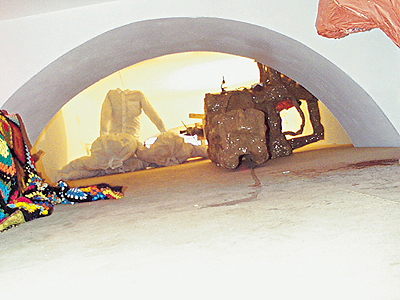
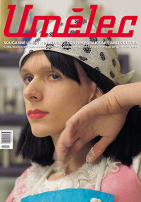
















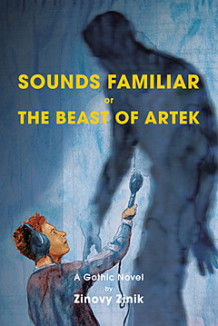






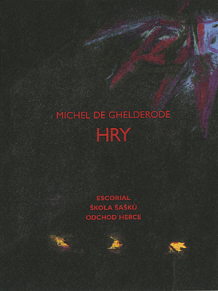





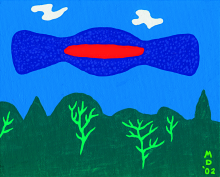
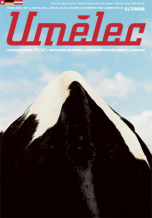
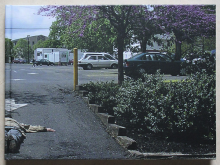


 23.05.-17.06.2017 STU MEAD & MIKE DIANA IN PARIS
23.05.-17.06.2017 STU MEAD & MIKE DIANA IN PARIS
Komentáře
Článek zatím nikdo nekomentovalVložit nový komentář